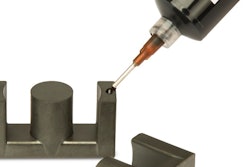By combining nanotechnology and fiber optics, engineer Aitor Urrutia has developed new humidity sensors to combat the proliferation of bacteria at facilities built in high-humidity environments.
Bacteria is common in these environments, and often leads to the buildup of "biofilms", essentially when too many microorganisms attach to the surface and it becomes a giant, foul dogpile of bacteria.
The buildup leads to biofouling, which can cause materials and devices to deteriorate and even fail.
The new sensors are made up of an optic structure that is coated in one micron layers of a material that is embedded with silver nanoparticles.
The coatings give the sensors antibacterial properties as well as increased sensitivity.
The fiber optic sensors are also immune to electromagnetic interference and last longer, all while being cheaper, smaller, lighter, and they could even be used for reading long-distance measurements.
The new humidity sensors could serve a wide variety of sectors, such as food and pharmaceutical processing facilities; biotech, home automation, or even monitoring cooling towers or off-shore facilities.






















